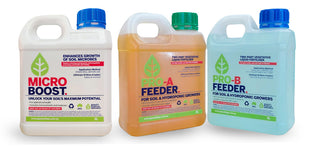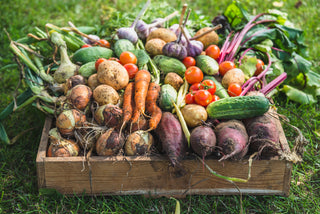As the agricultural industry evolves, so does the role of seedling nurseries. While technological advancements have significantly improved the efficiency and productivity of nurseries, the future presents new challenges for farmers, including rising costs, labour shortages, and the limits of advanced growing systems. This blog explores what the future of seedling nurseries looks like and how farmers are adapting to these changes.
The Rise of Controlled Environments
In recent years, controlled environment agriculture (CEA) has gained popularity for its ability to create perfect growing conditions year-round. Greenhouses, indoor farms, and vertical farming systems provide consistent light, temperature, and humidity, making it easier to produce strong, healthy seedlings. These environments use sophisticated technologies, such as LED lighting, automated irrigation, and climate control, ensuring optimal conditions for plants to thrive.
However, while high-density indoor growing has its place in high-population regions overseas, particularly in areas where land is limited and vertical farming maximizes space, this method is less applicable to Australia. Given the lower population density and abundance of agricultural land, the high costs associated with setting up controlled environments and high-density growing systems cannot be justified. In Australia, the cost and setup of such technology far outweigh the benefits, especially when compared to the traditional methods that have served the industry well.
The Value of Transplants for Fruiting Crops and Brassicas
Despite the rise in direct seeding and other approaches, transplants remain the best method for growing certain crops, particularly fruiting crops like tomatoes, peppers, and cucumbers, as well as the majority of brassicas such as broccoli, cauliflower, and cabbage. Transplants offer these crops a crucial advantage: healthier, more vigorous growth due to the controlled environment in which they are initially raised.
Farmers who utilize transplants also benefit from being able to fit in multiple extra crops throughout the growing season. By transplanting seedlings that are already hardened off and ready to plant, growers get a significant head start over direct seeding. This early jump can make the difference between having one or two additional harvests, especially for crops like broccoli or cauliflower, where the quicker establishment and healthier growth of transplants result in higher yields.
In markets where pricing remains stable, transplants are a viable option for many farmers, allowing them to produce higher-quality crops in a shorter timeframe. However, the ongoing challenge is that market prices for produce, particularly fruits and vegetables, are continuing to squeeze farmers' profits. While the grocery stores and supermarkets largely control the prices that consumers pay, farmers are bearing the brunt of low returns, making it increasingly difficult for them to stay profitable.
Multi-Cut Crops: A Double-Edged Sword
Multi-cut crops—plants that can be harvested multiple times throughout their lifecycle, like certain types of lettuce, spinach, and kale—offer clear benefits to growers. These crops provide continuous yield without the need for constant replanting, improving efficiency and offering better returns per plant.
However, the labour costs associated with multi-cut crops are becoming a heavy burden for farmers. Harvesting these crops multiple times means increased labour inputs, especially since they require frequent cutting. Wages for workers continue to rise, and many farms are finding it difficult to balance the cost of cutting with the profits they make from selling these crops.
In addition to the labour costs, there is the pressure of market pricing. Farmers need to find the right balance between paying workers to harvest and selling their produce at a price that the market will accept. Often, market prices are set too low to cover the cost of multiple harvests, putting intense financial pressure on growers. As a result, some farmers are moving away from multi-cut crops despite their efficiency, as the economic returns do not justify the labour costs.
This wage-driven issue is one of the many factors pushing farmers out of the industry. Unable to find a profitable middle ground between the cost of labour, maintaining quality produce, and competing in a marketplace with fluctuating prices, many farmers are reconsidering whether it’s worth continuing in agriculture at all.
Labour Shortages: A Growing Problem
Another challenge affecting the future of seedling nurseries is labour shortages. Modern agriculture increasingly relies on a shrinking workforce, making the intensive work of transplanting seedlings and harvesting crops more difficult to manage. While technology is addressing some of these labour issues through automation, it is far from a universal solution.
In particular, finding workers for harvests has become a significant challenge, and many farm operations rely heavily on immigrant labour, as domestic workers are less inclined to take on physically demanding agricultural work. This reality exacerbates labour shortages and puts additional pressure on farms, especially during peak harvest seasons when large amounts of crops need to be cut and processed.
The Reality of Government Grants
For many farmers, government grants can offer much-needed financial relief, particularly when it comes to investing in modern machinery or infrastructure upgrades. These grants often aim to support agricultural operations by helping fund new technologies or expansion plans.
However, there is a significant catch: many of these grants come with requirements to create jobs. While the idea of job creation is admirable, in reality, many farmers need these funds to invest in machinery that reduces labour costs—not to hire additional workers. With labour shortages already straining operations, farmers are increasingly turning to automation and mechanization to fill the gap, not expand their workforce.
This mismatch between grant conditions and the realities of farming is making it difficult for many farmers to access the help they need. For instance, machinery that could automate processes like cutting multi-cut crops or transplanting seedlings would significantly reduce labour costs, yet accessing grants to purchase such machinery often hinges on a commitment to increase the number of jobs on the farm. This requirement clashes with the economic necessity of reducing workforce costs to stay competitive in the market.
Market Pressures: Farmers and Nurseries on the Brink
In Australia, farmers are finding that it’s not just the labour costs or the operational expenses that are threatening their livelihoods—it's market pricing. While grocery stores and supermarkets maintain control over what consumers pay, the farmers themselves are receiving less and less return on their crops. The imbalance between the costs of production and the selling price at markets is putting immense pressure on small and medium farmers.
This economic squeeze is leading to a scenario where many farmers and nurseries are holding on by a thread, hoping that market conditions will improve. Unfortunately, this recovery doesn’t seem to be on the horizon. As prices continue to fluctuate in favour of larger corporate entities, small to medium-sized operations are being pushed out of the industry.
This trend is resulting in a toppling of small to medium farmers, leaving only the large-scale industrial farms and supermarkets to dominate the agricultural landscape. The collapse of these smaller players will have far-reaching consequences for the diversity and sustainability of food production in Australia, and the country risks losing the local, family-owned farms that have traditionally been the backbone of the agricultural sector.
Conclusion: Navigating the Future of Seedling Nurseries
As farming continues to evolve, seedling nurseries will remain an essential part of agriculture. However, the future will require balancing the costs, benefits, and challenges of modern technology with the practicalities of traditional methods. Controlled environments will continue to offer unparalleled precision for plant growth, but high costs and labour issues will push some farmers toward simpler methods like direct seeding.
Multi-cut crops, while offering efficiency, are being reconsidered as labour costs continue to rise, pushing farmers into difficult financial positions. Finding the right balance between paying wages, meeting market demands, and keeping farms profitable is becoming increasingly challenging.
While government grants can provide crucial financial support, the requirement for job creation often conflicts with the reality that farms need funds to invest in automation and machinery to cut labour costs—not hire more workers. This makes it difficult for many farmers to access the grants they need to stay competitive and sustainable.
In Australia, high-density indoor growing, which works in densely populated areas overseas, doesn’t hold the same promise due to land availability and the unjustifiable costs of setting up such systems. However, transplants remain a critical method for growing fruiting crops and brassicas, offering farmers the ability to squeeze in multiple harvests due to the early start transplants provide. The issue is not the technique but the market price, which is failing to cover the rising costs of production.
The future of seedling nurseries lies in adaptability. Whether it’s through room-to-room growing in high-tech environments, direct seeding, or hybrid approaches that blend both, growers will need to innovate to stay competitive in a rapidly changing agricultural landscape.
Farmers and nursery operators alike will need to find the right balance between technology, cost, labour, and sustainability to ensure they continue to thrive, despite the challenges ahead. Unfortunately, the imbalance of market pricing, labour shortages, and government regulations threatens to leave only large industrial farms and supermarket giants in control, while small and medium farmers fight to survive in an increasingly difficult industry.






